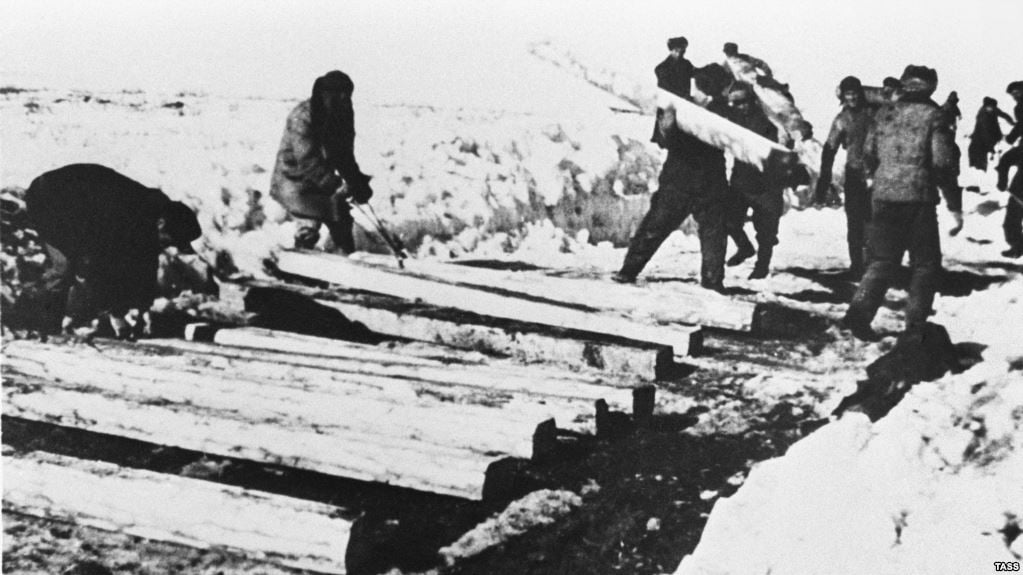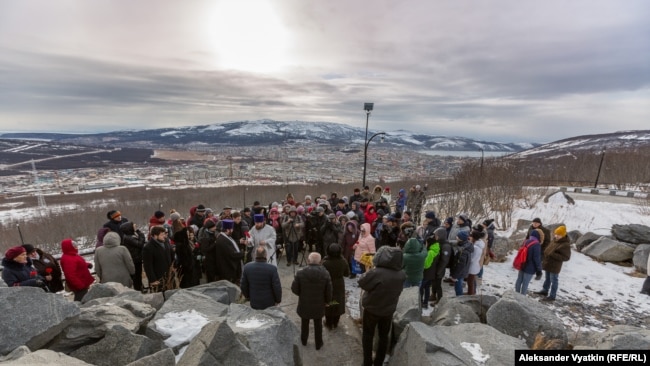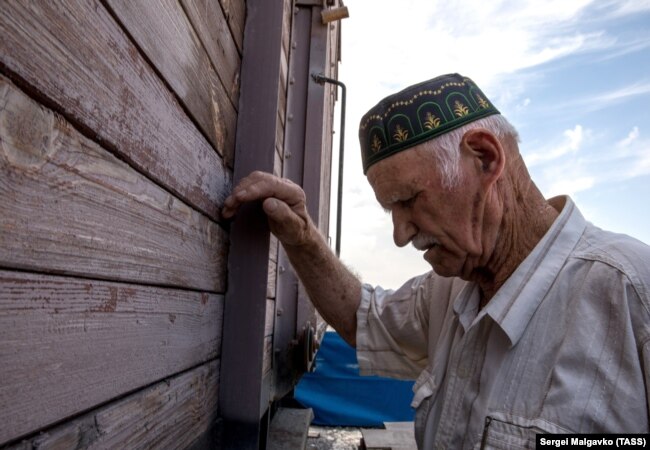
By Polygraph
“I note that we’ve never, even in the days of tsarist Russia, killed people for dissent. This, by the way, is the great strength of our people.”
FALSE
There is a clear history of persecution and killing in Soviet and Tsarist Russia.
On January 11, the Russian nationalist publication Zavtra published an interview with Sergei Nosov, governor of Russia’s Magadan region, who claimed that Russia has never killed anyone for dissent.
“I note that we’ve never, even in the days of Tsarist Russia, killed people for dissent,” the governor said.
The Moscow Times, which published a story about the governor’s claims, provided links to detailed sources showing that in the Soviet period at least, people were in fact executed for dissent — hundreds of thousands.
Several days later, Nosov apologized for the statements, claiming that they were misconstrued.
“It was not an interview as such, but a conversation, it was said in a conversation,” he told the local Magadan news portal Vesma.
“As for the attitude to history: we have many bright and glorious pages, but there are also sad and tragic- this is a fact. And one of the most tragic is the history of the Gulag on the territory of our country. We need to remember this, to know, to prevent the repetition of something similar,” Nosov explained.
Let’s look at some of the “tragic” history, particularly in the governor’s own region:
Magadan contained some of the Soviet labor camps of the Kolyma region, which held around 740,000 prisoners between 1932 and 1953, the year that Stalin died. Of those, at least 120,000 prisoners died due to the harsh conditions of the camps. The Moscow Times article also points out that around 700,000 Soviet citizens were executed during the Great Terror of 1937-38.
Interestingly, Meduza linked to an official site of the Federal Penitentiary Service of Russia that details the history of the labor camps in Nosov’s region, Magadan. The site includes not only data on the number of prisoners, but also information on the arrival in the late 1930’s of more political prisoners, “counter-revolutionary elements,” along with accounts of beatings, torture and extrajudicial killings.The site indicates it was last updated in 2016.
“One of the most notorious features of the Soviet regime was its attempt to curtail political opposition by creating a new species of crime: ‘anti-Soviet agitation and propaganda,’” wrote Professor Sarah Davies of Durham University in 1997, the pre-Putin period when Russians were coming to terms with the bloody Soviet era. The anti-Soviet agitation and propaganda statute, Davies wrote, “was an important weapon…particularly at the height of the Great Terror” in 1937 and 1938.
Many of those killed by the Soviet regime had not engaged in any kind of dissent. Many victims of the Holodomor, the Great Famine in Ukraine in 1932-33, died for allegedly deliberately failing to fulfill state quotas for grain production. In other cases, entire ethnic groups were deported to Siberia or Central Asia en masse, often dying in transit due to harsh conditions, as collective punishment for the alleged actions of a few. One famous example is the Crimean Tatars, who like Chechens and some other ethnic groups, were deported from their homelands to Central Asia, where they would remain for decades.
During the Tsarist era, according to the BBC, “the army…was used to crush opposition in the cities.”Imperial Russia’s third prime minister, Pyotr Stolypin, became associated with “Stolypin cars” — special railroad carriages designed to deport peasants, along with their livestock and property, to Siberia. Stolypin is also associated with “Stolypin Neckties,” slang for the hangman’s noose. The term was coined during the period of repression that followed Russia’s failed 1905 Revolution.
The record of the post-Soviet era is less clear.Russia no longer has capital punishment, so while dissent is still punished, no one is officially executed. However, a number of dissidents have been murdered, and those cases have never been fully solved. Perhaps the most famous is the assassination of Russian opposition leader Boris Nemtsov, who was gunned down within sight of the Kremlin’s walls in February 2015. Two years later, five Chechen men were convicted for the assassination, but Nemtsov’s family and their lawyer said they did not believe that “those who ordered or arranged for the murder” had been found.They stopped short of accusing the Kremlin.
In addition to Nemtsov, a number of Russian journalists who investigated sensitive topics have died under mysterious circumstances, some of them falling out of windows.
By Polygraph






